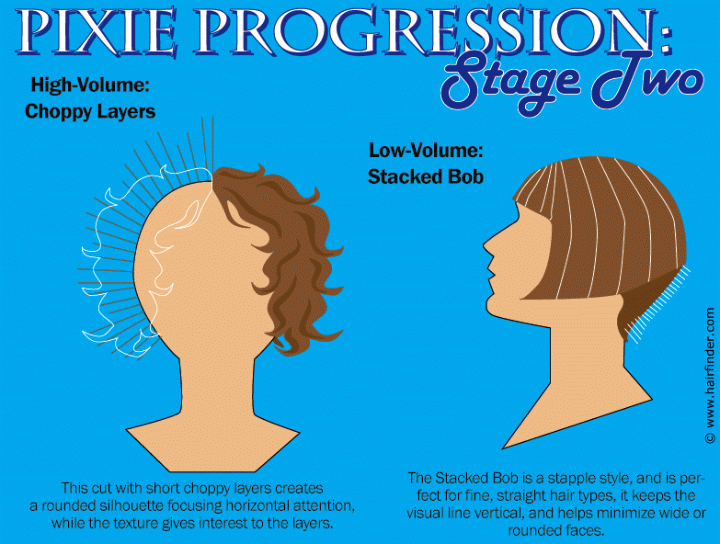Transitioning To Or From A Pixie Cut (2)

Previous page
Low-Volume: Blunt, Neck-Length Bob
The low-volume version of the mentioned cut employs a blunt cut that extends to a point along the neck, below the chin and jawline. The hair is divided into sections, with each section being lowered in halves and cut according to a guide length determined by the desired overall length.
As the rest of the hair is lowered, it is cut using the established cutting line. The resulting bob should be clean and neat. This particular cut is perfect for those with fine, straight hair and for those who need to have more vertical focus in their look.
The overall shape of this cut is more circular, and the layers are going to be point-cut in order to give more texture to the style when it is finished. The finished style will feature the ends of the layers being turned outward, away from the scalp, and added product will be used to define the tips of the layers and to create visual interest.
Low-Volume: Stacked Bob
For individuals with straight hair types, the easiest approach is to continue with the bob style while incorporating some bolder elements as we go shorter. Therefore, I recommend that the mid-stage cut for the "low-volume" option be a stacked bob.
The forward lengths should fall to the corners of the mouth and the cutting line should angle to the middle of the earlobe and on to the occipital bone at the back of the skull. The hair below this line should be layered in a long smooth taper down the neck.
The Finishing Line
Of course, the final hairstyle in the progression is the pixie cut. We’ve covered this particular cut in other articles and discussed its varied permutations and elements. The final look of the pixie cut should always be tailored to the individual, and the individual’s personal style should shine through. Whether it's a sleek, close-cropped style or a spiky, textured halo, the pixie cut itself makes a statement.
As mentioned before, the stages and styles presented here are just options based on generic criteria. If you don't like the shag and you have wavy hair, feel free to choose a different cut for your progression. Also, feel free to adapt the styling to suit your preferences.
If you desire a bob cut and your hair is naturally wavy, you can use a flat iron to smooth out your hair and achieve the desired look. There's no rule that says you have to give up on a style you like just because it may not be naturally suited to you.
©Hairfinder.com
See also:
Short hairstyles and pixies
Long hair versus short hair